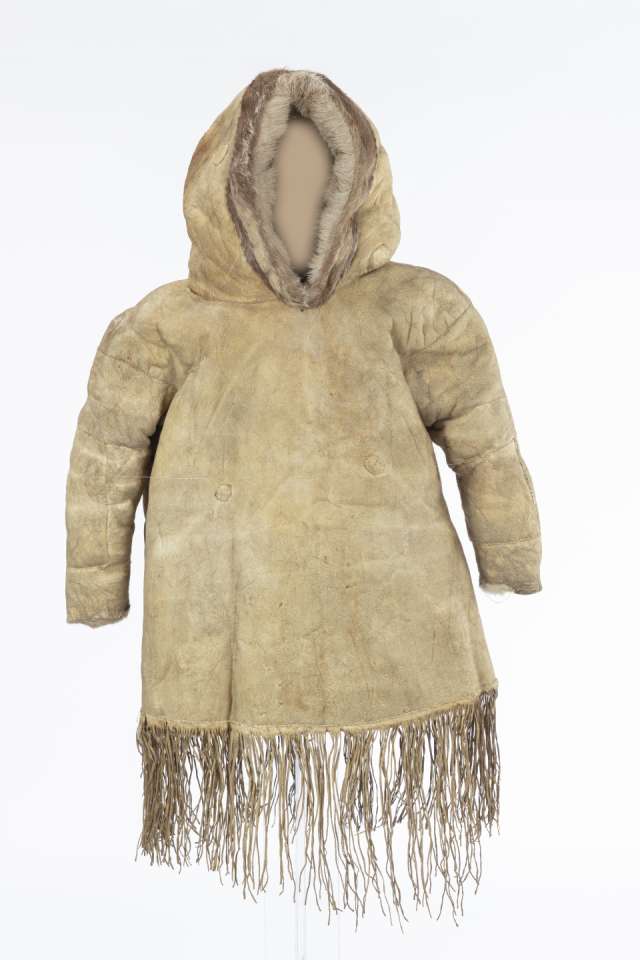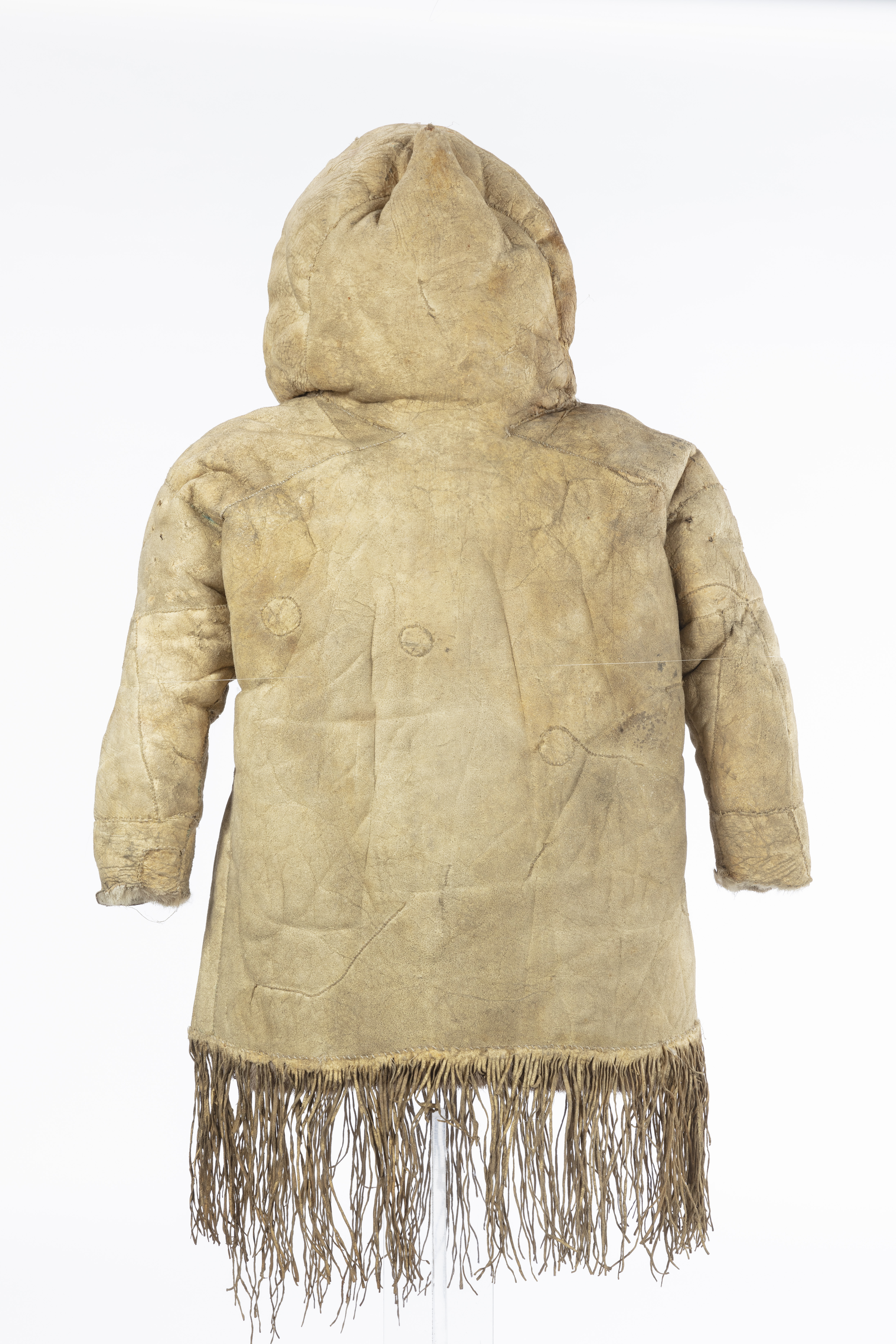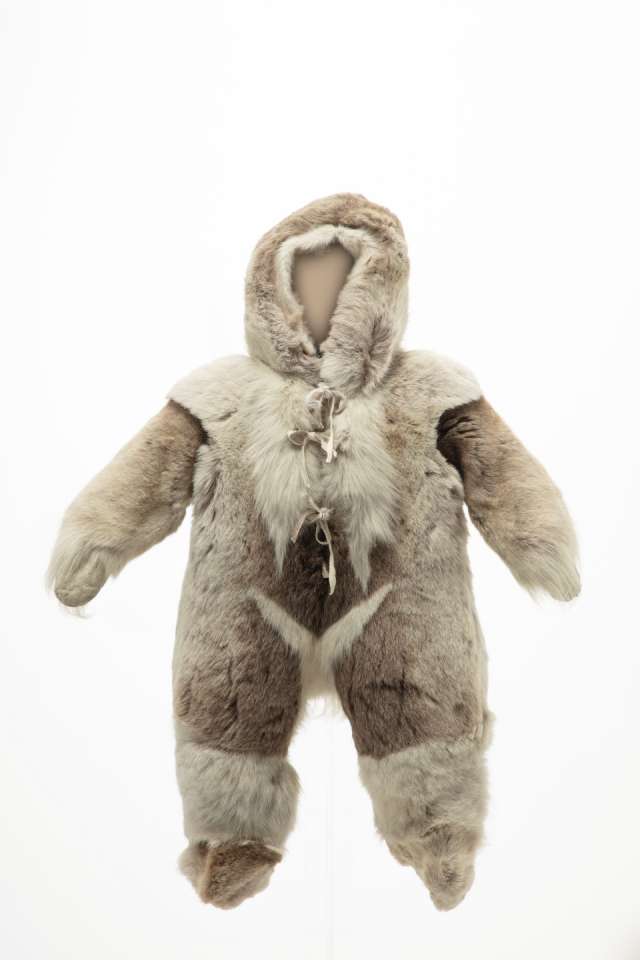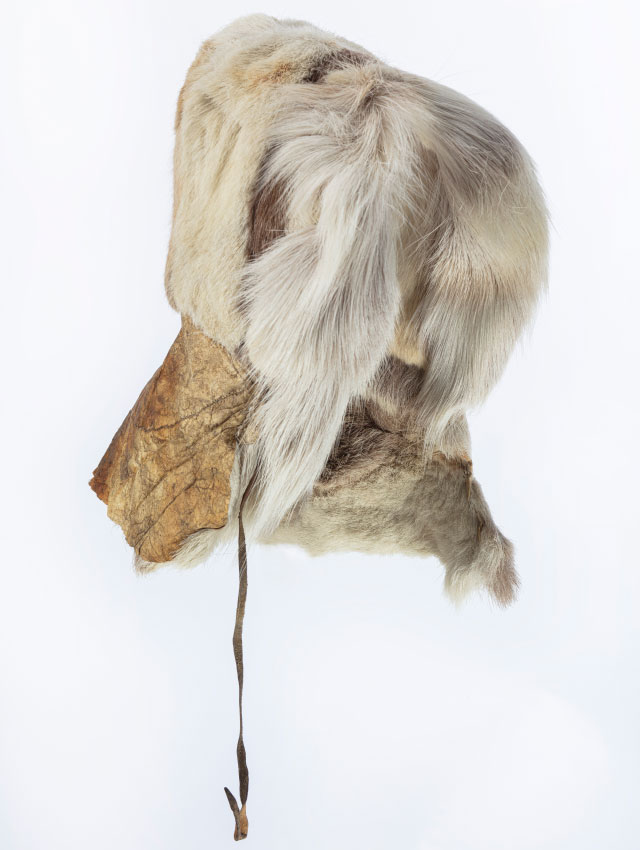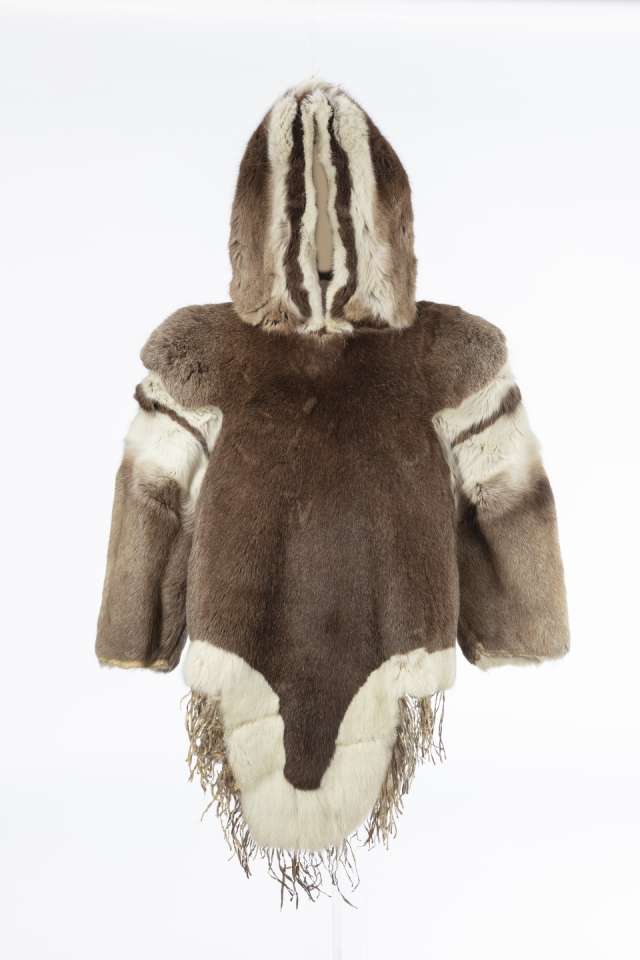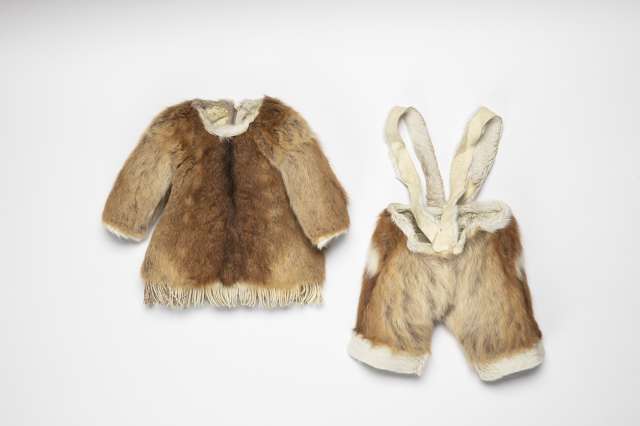Boy's parka (kaivvasuk atigi)
This parka, named atigi, was used as an inner garment. It was worn year-round by boys as soon as they could run and get dressed without help, around the age of seven.
In summer, the atigi was worn by itself. In winter, it was covered with a qulittaq, a similarly styled coat with the fur on the outside. This model of atigi, named kaivvasuk, was simple, undecorated, without side slits, and of the same length in front and behind. Elders also wore this parka model.
The hood is pointed, in keeping with the usual contours of male clothing. The fringes, nigjait, kept the coat down and the wind out.
Nowadays, boys no longer wear this kind of caribou-skin parka. Instead, they wear coats made of synthetic fabrics, which are sometimes sewn by their mothers or by someone else in the family.

